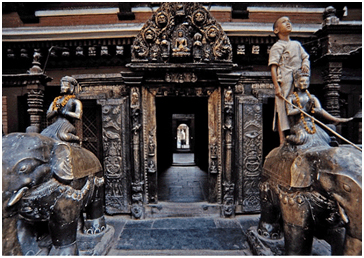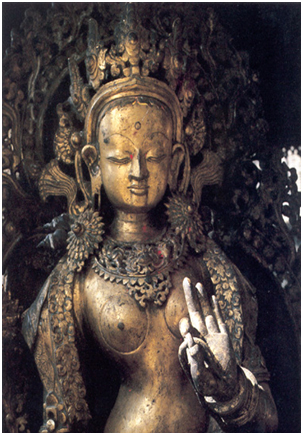- Home |
- Why With Us |
- About Us |
- Booking |
- Contact Us |
- Site Map
- Home
-
Nepal
-
Trekking
- Arun Valley with Gokyo Lakes
- Everest Base Camp Trek
- Everest- A Living Culture Exploration
- Everest Explore
- Everest Base Camp (via Thame) Trek
- Everest Base Camp with Kala Patthar
- Everest Comfort Trek
- Everest High Passes with Ama Dablam Base Camp
- Everest Mani Rimdu Festival Trek
- Everest Nagpa La Trek
- Everest with three high passes
- Gokyo Ri, Chola Pass & Chukung Ri with Kala Patthar
- Gokyo with Everest Base Camp
- Jomsom - Muktinath
- Jomsom - Muktinath
- Khayar Lake Trek
- Manaslu and Tsum Valley with Larkya La
- Upper Mustang Trek
- Manaslu High Circuit
- Manaslu, Tilicho Pass & Upper Mustang
- Annapurna Base Camp Trek
- The Annapurna Circuit Trek
- Annapurna Panorama
- Nar and Phu Valley Trekking
- Nepal Rhododendron Trek
- Royal Trek
- Saribung Trek and Expedition
- Annapurna Sanctuary Trek
- The Annapurna Sunrise Trek
- Expedition
-
Rafting
-
Peak Climbing
-
Tours
- Kathmandu-Chitwan-Jungle Tour with visit to Pokhara
- Dawn to Dusk Tour
- Historical, Natural & Cultural Tour with Camping
- Kathmandu Valley Temple Tour
- Temple - Panorama - Jungle Tour
- Taste of Nepal
- Central Nepal Tour
- Explore Nepal Tour & Trek
- Nepal Cross-country Tour
- Best of Nepal Tour & Treks
- Kathmandu valley rim Tour & Treks
- Nepal Culture Tour
- Introduction to Nepal Tour & Treks
- Nepal at a glance Tour & Treks
- Wonders of Nepal Tour & Treks
- Glimpses of Nepal Tour & Treks
- Through the Silhouette Tour & Treks
- Tent and Temple Tour
- Kathmandu-Chitwan-Pokhara Tour
- Historical, Cultural City and Jungle Tour
- Nepal Wildlife Tour
- Nepal Panorama Historical Tour
- Nepal Adventure Tour
- Nepal Pilgrimage Tour
- Ghalegaun-Ghanapokhara Homestay Tour
- Jungle Safari
- Adventure Sports
-
Trekking
- Tibet
-
Bhutan
-
India
- Yoga Tour
- About Us
-
The Great Himalayan Trail
-
Short Tours/Treks

The Early Kingdom of the Licchavis

In the late fifth century, rulers calling themselves Licchavis began to record details on politics, society, and economy in Nepal. The Licchavis were known from early Buddhist legends as a ruling family during the Buddha's time in India, and the founder of the Gupta Dynasty claimed that he had married a Licchavi princess. Perhaps some members of this Licchavi family married members of a local royal family in the Kathmandu Valley, or perhaps the illustrious history of the name prompted early Nepalese notables to identify themselves with it. In any case, the Licchavis of Nepal were a strictly local dynasty based in the Kathmandu Valley and oversaw the growth of the first truly Nepalese state. The earliest known Licchavi record, an inscription of Manadeva I, dates from 464, and mentions three preceding rulers, suggesting that the dynasty began in the late fourth century. The last Licchavi inscription was in A.D. 733. All of the Licchavi records are deeds reporting donations to religious foundations, predominantly Hindu temples. The language of the inscriptions is Sanskrit, the language of the court in north India, and the script is closely related to official Gupta scripts. There is little doubt that India exerted a powerful cultural influence, especially through the area called Mithila, the northern part of present-day Bihar State. Politically, however, India again was divided for most of the Licchavi period.
 To the north, Tibet grew into an expansive military power through the seventh century, declining only by 843. Some early historians, such as the French scholar Sylvain Lévi, thought that Nepal may have become subordinate to Tibet for some time, but more recent Nepalese historians, including Dilli Raman Regmi, deny this interpretation. In any case, from the seventh century onward a recurring pattern of foreign relations emerged for rulers in Nepal: more intensive cultural contacts with the south, potential political threats from both India and Tibet, and continuing trade contacts in both directions.
To the north, Tibet grew into an expansive military power through the seventh century, declining only by 843. Some early historians, such as the French scholar Sylvain Lévi, thought that Nepal may have become subordinate to Tibet for some time, but more recent Nepalese historians, including Dilli Raman Regmi, deny this interpretation. In any case, from the seventh century onward a recurring pattern of foreign relations emerged for rulers in Nepal: more intensive cultural contacts with the south, potential political threats from both India and Tibet, and continuing trade contacts in both directions.
The Licchavi political system closely resembled that of northern India. At the top was the "great king" (maharaja), who in theory exercised absolute power but in reality interfered little in the social lives of his subjects. Their behavior was regulated in accordance with dharma through their own village and caste councils. The king was aided by royal officers led by a prime minister, who also served as a military commander. As the preserver of righteous moral order, the king had no set limit for his domain, whose borders were determined only by the power of his army and statecraft--an ideology that supported almost unceasing warfare throughout South Asia. In Nepal's case, the geographic realities of the hills limited the Licchavi kingdom to the Kathmandu Valley and neighboring valleys and to the more symbolic submission of less hierarchical societies to the east and west. Within the Licchavi system, there was ample room for powerful notables (samanta) to keep their own private armies, run their own landholdings, and influence the court. There was thus a variety of forces struggling for power. During the seventh century, a family known as the Abhira Guptas accumulated enough influence to take over the government. The prime minister, Amsuvarman, assumed the throne between approximately 605 and 641, after which the Licchavis regained power. The later history of Nepal offers similar examples, but behind these struggles was growing a long tradition of kingship.
 The economy of the Kathmandu Valley already was based on agriculture during the Licchavi period. Artworks and place-names mentioned in inscriptions show that settlements had filled the entire valley and moved east toward Banepa, west toward Tisting, and northwest toward present-day Gorkha. Peasants lived in villages (grama) that were administratively grouped into larger units (dranga). They grew rice and other grains as staples on lands owned by the royal family, other major families, Buddhist monastic orders (sangha), or groups of Brahmans (agrahara). Land taxes due in theory to the king were often allocated to religious or charitable foundations, and additional labor dues (vishti) were required from the peasantry in order to keep up irrigation works, roads, and shrines. The village head (usually known as pradhan, meaning a leader in family or society) and leading families handled most local administrative issues, forming the village assembly of leaders (panchalika or grama pancha). This ancient history of localized decision making served as a model for late twentieth-century development efforts.
The economy of the Kathmandu Valley already was based on agriculture during the Licchavi period. Artworks and place-names mentioned in inscriptions show that settlements had filled the entire valley and moved east toward Banepa, west toward Tisting, and northwest toward present-day Gorkha. Peasants lived in villages (grama) that were administratively grouped into larger units (dranga). They grew rice and other grains as staples on lands owned by the royal family, other major families, Buddhist monastic orders (sangha), or groups of Brahmans (agrahara). Land taxes due in theory to the king were often allocated to religious or charitable foundations, and additional labor dues (vishti) were required from the peasantry in order to keep up irrigation works, roads, and shrines. The village head (usually known as pradhan, meaning a leader in family or society) and leading families handled most local administrative issues, forming the village assembly of leaders (panchalika or grama pancha). This ancient history of localized decision making served as a model for late twentieth-century development efforts.
One of the most striking features of present-day Kathmandu Valley is its vibrant urbanism, notably at Kathmandu, Patan, and Bhadgaon (also called Bhaktapur), which apparently goes back to ancient times. During the Licchavi period, however, the settlement pattern seems to have been much more diffuse and sparse. In the present-day city of Kathmandu, there existed two early villages--Koligrama ("Village of the Kolis," or Yambu in Newari), and Dakshinakoligrama ("South Koli Village," or Yangala in Newari)--that grew up around the valley's main trade route. Bhadgaon was simply a small village then called Khoprn (Khoprngrama in Sanskrit) along the same trade route. The site of Patan was known as Yala ("Village of the Sacrificial Post," or Yupagrama in Sanskrit). In view of the four archaic stupas on its outskirts and its very old tradition of Buddhism, Patan probably can claim to be the oldest true center in the nation. Licchavi palaces or public buildings, however, have not survived. The truly important public sites in those days were religious foundations, including the original stupas at Svayambhunath, Bodhnath, and Chabahil, as well as the shrine of Shiva at Deopatan, and the shrine of Vishnu at Hadigaon.
There was a close relationship between the Licchavi settlements and trade. The Kolis of present-day Kathmandu and the Vrijis of present-day Hadigaon were known even in the Buddha's time as commercial and political confederations in north India. By the time of the Licchavi kingdom, trade had long been intimately connected with the spread of Buddhism and religious pilgrimage. One of the main contributions of Nepal during this period was the transmission of Buddhist culture to Tibet and all of central Asia, through merchants, pilgrims, and missionaries. In return, Nepal gained money from customs duties and goods that helped to support the Licchavi state, as well as the artistic heritage that made the valley famous.

- History
- Overview
- Ancient Nepal
- The Early Kingdom of the Licchavis
- Medieval Nepal, 750-1750
- The Malla Kings
- The Three Kingdoms
- The Making of Modern Nepal
- The Struggle for Power
- The Enclosing of Nepal
- Infighting among Aristocratic Factions
- Rana Rule
- The Ranas
- The Growth of Political Parties
- The Return of the King
- The Democratic Experiment
- The Panchayat System under King Mahendra
- King Birendra
- Movement to restore democracy
- Maoist Insurgency
- Struggle for Democracy
- King's Direct Rule
- People's Movement
- The Constitutional Assembly Election
- Government and Political Conditions
- Geography
- Festivals of Nepal
- Overview
- Bada Dashain (September-October)
- Sri Panchami or Basanta Panchami
- Tihar and Laxmi Puja - festival of lights (Oct-Nov)
- Maghe Sankranti
- Naga Panchami
- Janai Poornima (Rokshya Bandhon)
- Gaijatra
- Pancha Dan
- Teej and Rishi Panchani
- Indrajatra
- Ghanta Karna
- Buddha Jayanti
- Maha Shivaratri
- Phagu Poornima or Holy
- Ghode Jatra
- Chaite Dashain
- Nava Varsha / New Year
- Festival of Seto Machhendranath
- Matatirtha Aunsi or Mother\'s Day
- Bala Chaturdashi
- Sri Krishna Janmastami
- Rama Nawami
- Mani Rimdu festival - Everest Region
- Tiji Festival, Mustang
- Dumje Festival - Everest Region
- Flora and Fauna of Nepal
- Flowering Plants of Nepal
- Getting in to Nepal
- Climate
- Nepal Visa Procedures
- Nepalese Embassies and Consulates Abroad
- Places visit in Nepal
- Orchids of Nepal
- World Heritage Sites of Nepal
Trekking in Nepal
Expeditions In Nepal
Rafting in Nepal
Tours in Nepal
All rights reserved.



